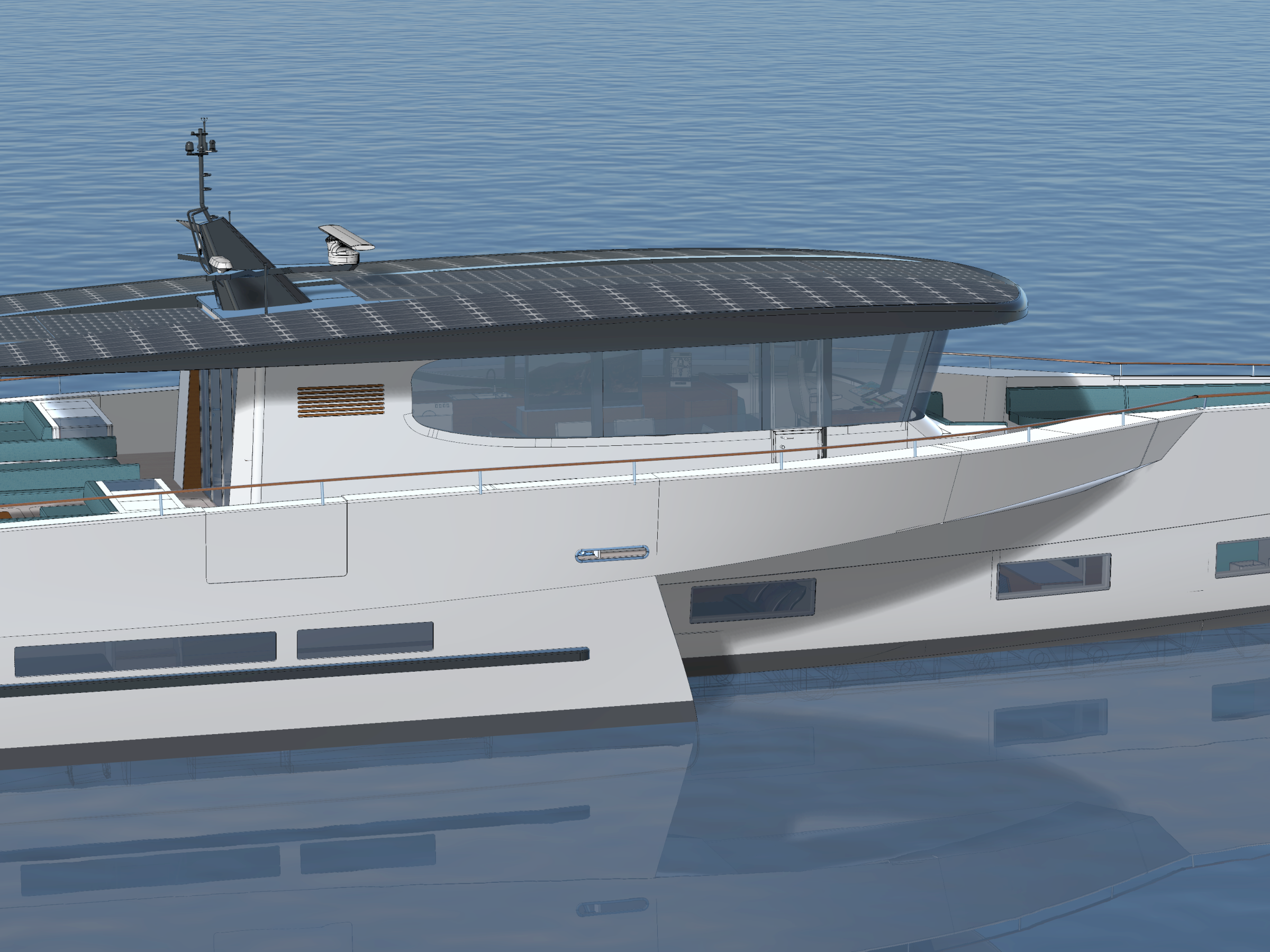Design#086 – 25m Stabilised mono-hull world cruiser
- Design Overview and Form: The stabilised monohull configuration offers a blend of hull forms, providing efficiency, seakeeping ability, and comfort for global exploration. The hull’s design minimizes pitching and allows high cruising speeds.
- Specifications and Features: The yacht features advanced composites construction, a large diesel engine, auxiliary electric motors, significant solar power, and various configurations (coupe and flybridge) to suit different needs. It also includes extensive onboard amenities and safety standards
- Interesting article here from powerboat.world
Upcycling your Recycling (powerboat.world)
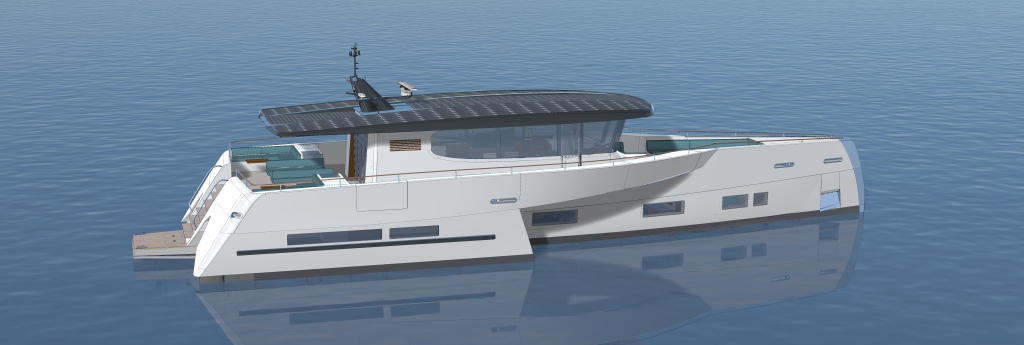
Design overview
With the speed and seaworthiness of a much larger vessel, this design is a unique blend of hull forms, construction methods, and onboard systems creating an exceptional platform for global exploration.
Designed to travel the world, from relaxed coastal cruising or open ocean transits, the stabilised monohull explorer provides exceptional levels of comfort, safety, and speed.
Form and function
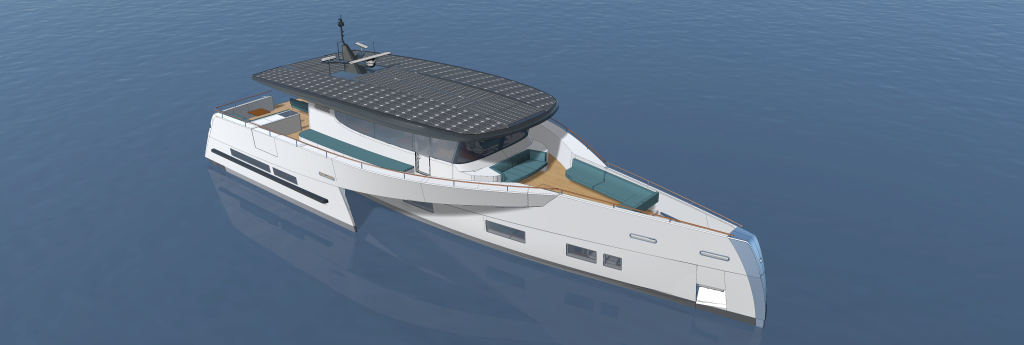
The stabilised monohull configuration is key to this vessel. It provides outstanding powering efficiency, seakeeping ability and comfort not possible with a monohull or catamaran. Bury Design’s experience in superyacht design and marine oil and gas applications has enabled the development of a unique vessel for global exploration.
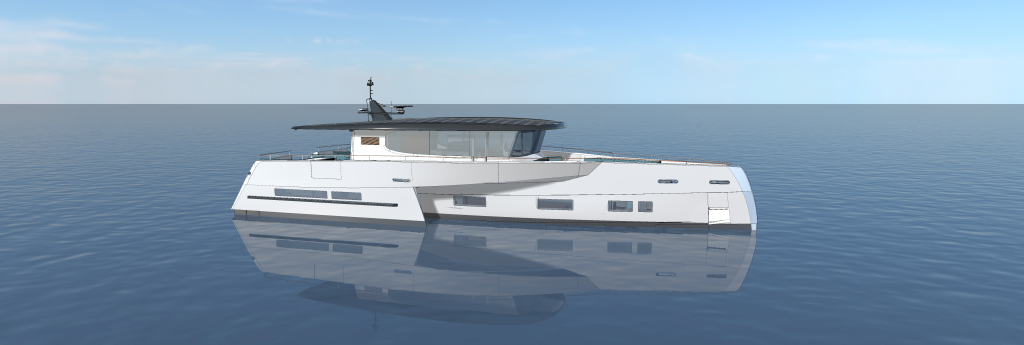
The hull configuration consists of a long, narrow, and deep centre hull containing propulsive machinery. The dimensions of the outer hulls are tailored to provide initial stability and a low rate of roll and are engineered for minimal resistance. The longitudinal distribution of submerged volume is designed to minimise pitching in a seaway, a factor that generally significantly slows down catamarans. The hull arrangement allows the vessel to operate in the open ocean comfortably at high cruising speeds for long distances, perfect for a globe spanning explorer.
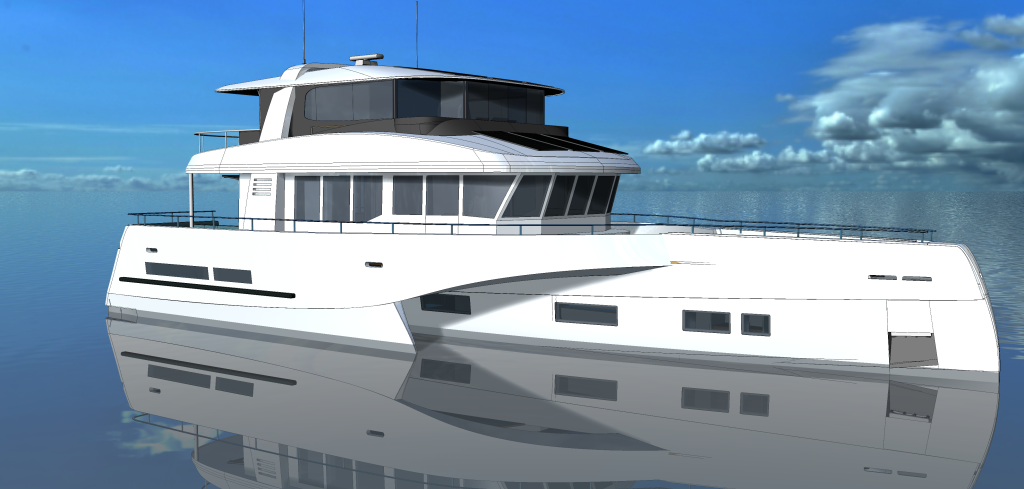
Primary propulsion is a single large displacement diesel engine driving a 1.3m diameter controllable pitch propeller. Auxiliary propulsion is from 2 x 20kw electric motors driving folding propellers in each Arma. All propellers are protected, and the vessel is designed to be able to dry out. The two Arma electric drives provide good in port manoeuvring without the optional bow thruster. Silent performance under electric drive only up to 8 knots is possible. The engine room and separate workshop are full headroom areas and there are separate laundry and battery/electrical equipment areas on the vessel. With extensive solar panels on the roof and significant stored energy in the lithium phosphate battery system, the vessel is designed to be power self-sufficient for some days at anchor, air conditioning use contingent.
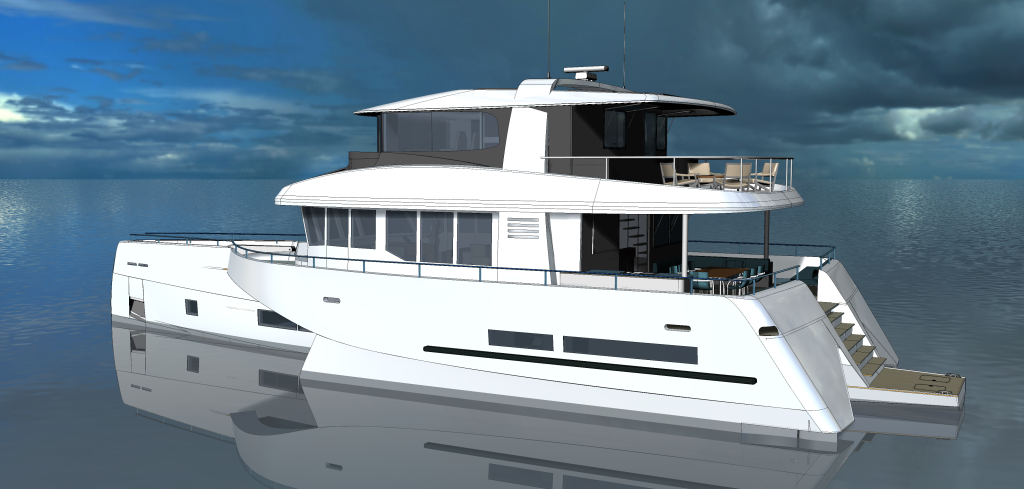
Construction is from advanced composites and for the initial vessel will feature solid carbon main hull with E-glass-PVC-vinyl ester Armas and deck/cabin. All structure is specified to meet or exceed Lloyds SSC standard.
The vessel comes in two variants – coupe and enclosed flybridge. These offer owners the choice of configurations best suited to their intended use and manning.
The coupe version is setup for a cruising couple and guests. Accommodation onboard includes 4 separate cabin areas, two in the main hull and one in each arma. Currently shown as setup as 3 guest cabins and 1 office/crew cabin, there is flexibility in how these spaces are configured.
The flybridge version is of increased accommodation volume and features internal access to the flybridge and armas. A larger main deck saloon is coupled with the enclosed flybridge which can be configured with a captains cabin with ensuite.
Designed to be a vessel rarely in a marina berth, the first vessel built will have a 5m twin jet powered catamaran tender stored on deck forward of the helm. This will be launched via a carbon deck crane which is stored in the bulwarks. This type of tender allows for fast and comfortable excursions. At anchor, this tender will be secured to the stern platform, allowing flush walk on/off access.

Construction of hull #1, coupe version, starts March 2025 AsOne Yachts, Thailand – Asoneyachts.com
Coupe version layouts can be downloaded below.

